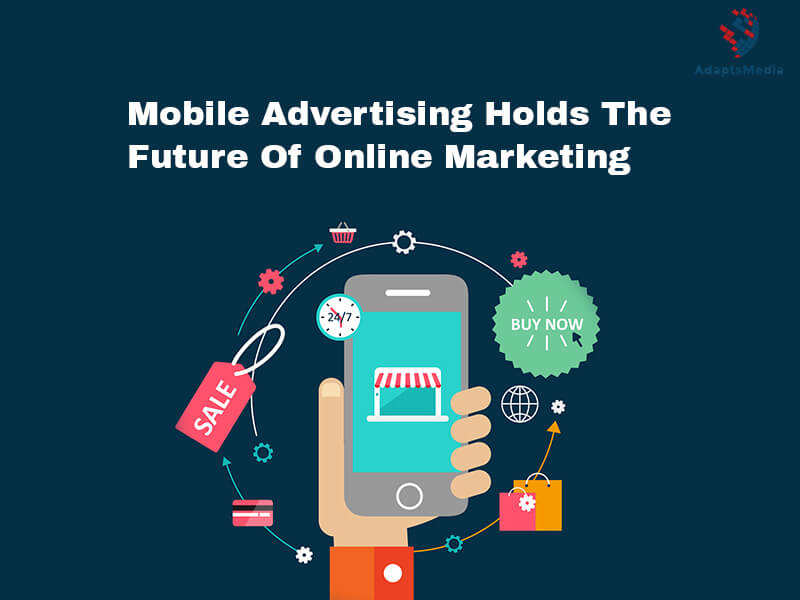Mobile marketing is now an integral advertising solution. In 2019, around 5.11 billion global users reportedly had unique mobile devices. Out of those, approximately 3 billion had smartphones.
As per data, people now spend more time on their smartphones and mobile devices compared to traditional digital devices like televisions. Moreover, an in-home eye-tracking study from Facebook revealed that in the United States, around 95 percent use their smartphone while watching TV.
The Age of Mobile Marketing
The ultimate goal of a marketing campaign is to reach potential customers over platforms that they are more likely to use. Multi-national companies and large corporations are investing a sizeable chunk of their budget into mobile advertising. You must’ve come across some of them yourself in the form of pop-ups, push notifications, banners, and other forms of advertisement over mobile websites.
With the global audience making a gradual transition to mobile platforms over laptops, desktops, and TVs, organizations are investing only in mobile-only marketing campaigns. And the best part – they are getting handsome returns.
Why Mobile Advertising is the Present and the Future?
Digital marketing is ever-changing. This makes it difficult for companies to rely on predictions. However, mobile marketing is the safest option for short-term as well as long-term gains. Here’s why:
1. Smartphone Screen-Time is Increasing
The amount of time that consumers spend on mobile phones is on a steady rise. Mobile screen-time accounts for about 71% of the total digital time spent by consumers.
Several reports suggest that adults and teenagers in the United States spend more time with their smartphones than traditional digital platforms. All this is an indication of what’s to come – a digital world with smartphones at its center.
2. Mobile Advertisements are on the Rise:
With digitization, mobile advertisements have surpassed other forms of marketing to become the primary form of digital advertisements. It’s projected that mobile advertisements will account for over 50% of digital marketers’ total spend on ads.
3. Mobile Marketing is Cost-Effective
Marketers would always factor in the budget spend required to get tangible returns from a marketing campaign.
Mobile advertisements generally have a CPV (Cost per Visit) system. The company is free from making risky predictions and only pay when they get an in-store visit through the advertisement.
4. Unique Device IDs Help Companies Understand Customers Better:
Another benefit of mobile marketing is the information that companies can acquire through a user’s accumulated data. Target-based advertisement is more likely to help businesses reach potential customers than any other form of advertisement. With television, laptops, and personal computers, a customer’s digital footprint is not enough for companies to prepare a tangible profile.
Every smartphone has a unique device ID that remains with the user at all times. It helps advertisers track user activity and also try to find out about their preferences and needs through location services. All these make mobile marketing the most viable option in terms of target-based advertising.
Types of Mobile Advertisements
To experience optimized results from mobile marketing, companies need to implement the right kind of strategies that align with the present and future (predictive) trends.
For example, customers tend to like engaging with QR codes in public, and companies are taking advantage of it by installing their QR codes in easily accessible locations.
1. App-Based Advertisements – Users mostly like using apps they are connected to. With new apps being introduced at every corner, the numbers will only go up. App-based advertisements, therefore, are the most common form of mobile ads. Applications like Google AdMob help advertisers post their advertisements on third-party mobile apps without any additional requirement.
2. In-Game Advertisements: If you are fond of mobile games, the chances are that you must have encountered in-game advertisements. Nearly all the games on smartphones have advertisements. These ads appear between different stages of the game to not disturb the user’s experience.
3. QR Codes: Users love scanning QR codes. There is a certain mystery factor attached to QR codes that entice customers, as they are unable to guess where they’ll be redirected. As such, QR codes are one of the most popular forms of mobile marketing out there.
4. Location-Based: These advertisements pop up on a user’s mobile screen based on their location activity. The goal is to decipher user’s interests and desires to give them fitting advertisements.
There are many other common forms of mobile advertisements as well, like mobile search ads, mobile image ads, and SMS advertisements. But the ones mentioned above cater to the future trends while producing handsome returns in real-time as well.
Conclusion
The best way to decide as a marketer is to think like a customer. So ask yourself this simple question – how much time have you spent on your smartphone today as compared to traditional media devices?
The answer will provide you with a clear picture of why mobile advertising is the definite future of digital marketing. Channelizing your resources on mobile marketing is an investment for the future and crucial to beat the present competition. The transition from PCs and television sets to smartphones is already taking place. Mobile marketing is already on its way to becoming the primary component of digital marketing.
Don’t miss out on the opportunity to gain a competitive edge. Contact our team for expert assistance.

